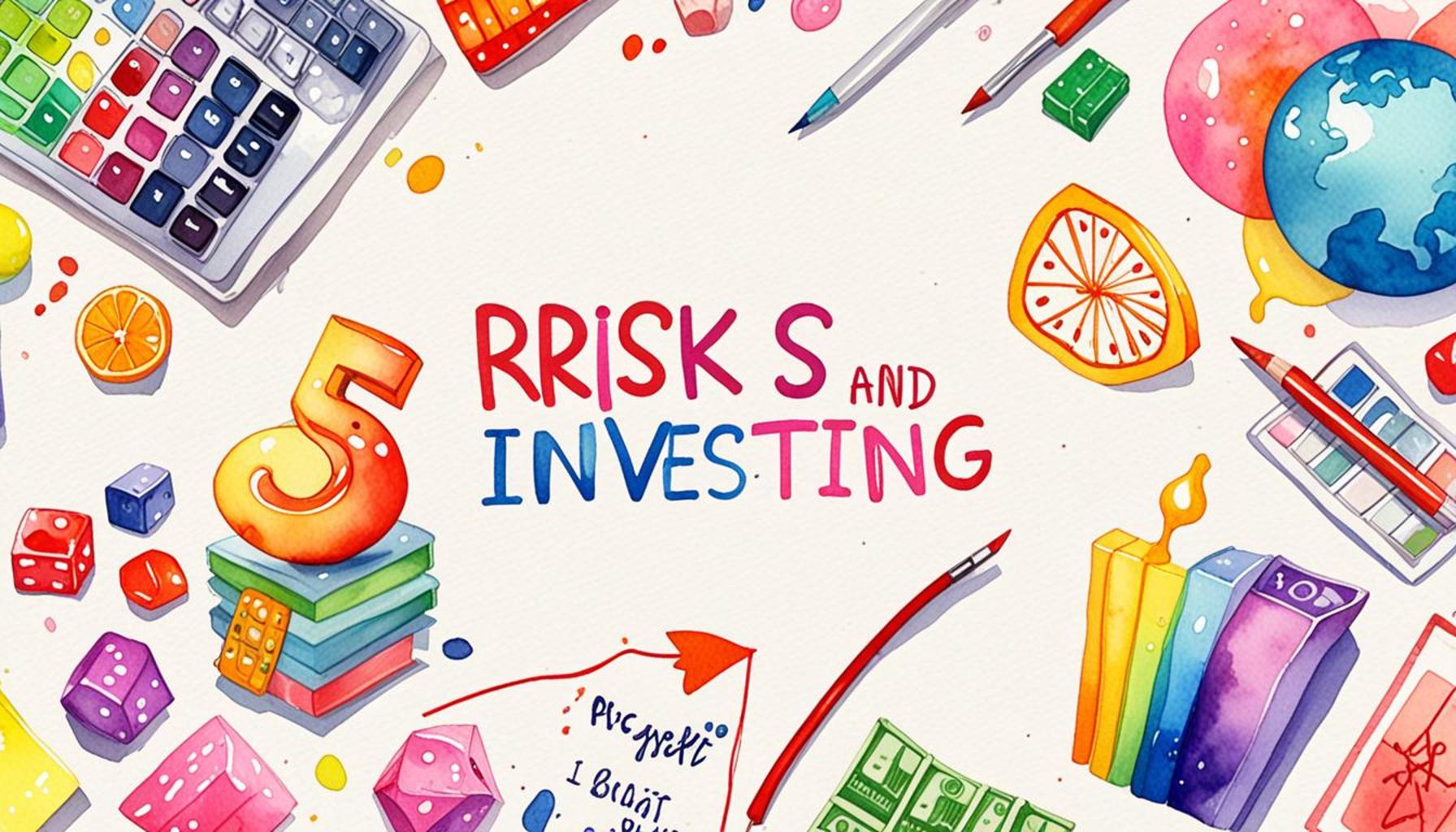How Intentional Investing Generates Financial Stability

In today’s unpredictable economic landscape, achieving financial stability often feels like a daunting task. However, a strategy known as intentional investing has emerged as a beacon of hope for many individuals and families. By making conscious and informed investment choices, anyone can pave their path towards a more secure financial future. This approach allows individuals to not only manage their wealth more effectively but also take ownership of their financial destiny.
What is Intentional Investing?
Intentional investing goes beyond selecting stocks or mutual funds based on past performances or trends. It is a holistic approach that encompasses several key principles:
- Understanding Goals: This first step involves clearly defining financial objectives. Are you saving for retirement, your child’s education, or a major purchase like a home? By aligning your investments with these personal milestones, you can determine the best strategies to reach them.
- Research: Thorough analysis is crucial before committing funds. This includes studying market conditions, understanding economic indicators, and examining the fundamentals of potential investments. Tools such as financial news websites, investment apps, and educational resources can be invaluable during this stage.
- Diversification: To mitigate risk, it’s essential to spread investments across various asset classes—like stocks, bonds, and real estate. For instance, during economic downturns, real estate or bonds may perform better than equities, providing a buffer against market volatility.
The Benefits of Intentional Investing
When practiced diligently, intentional investing can lead to significant advantages that empower investors:
- Risk Management: This approach makes navigating market volatility easier. By understanding your risk tolerance and adjusting your portfolio accordingly, you can reduce the impact of unexpected market fluctuations on your finances.
- Long-term Growth: Intentional investing encourages patience and strategic thinking. Rather than seeking quick profits, this method emphasizes the importance of consistently monitoring and adhering to a long-term investment strategy, which historically results in higher returns.
- Financial Literacy: Delving into intentional investing boosts financial intelligence, enabling individuals to make educated financial decisions. As you learn more about managing investments, you develop better skills that inform future financial choices.
As the financial world continuously evolves, gaining insights into intentional investing can be the key to unlocking enduring financial stability. Whether you’re a seasoned investor or just beginning your journey, this strategic approach can help you feel more secure in your financial decisions. Are you ready to explore how this approach can transform your investment journey and ultimately lead you closer to your financial aspirations?
SEE ALSO: Click here to read another article
The Foundation of Intentional Investing
At its core, intentional investing is about making informed choices that align with your unique financial vision. It begins with a deep understanding of your financial landscape, which is crucial in crafting a robust investment strategy. Consider your current financial situation: your income, savings, debts, and expenses. How do these elements play into your overarching financial goals? Whether you’re aiming for a comfortable retirement, setting aside funds for your children’s education, or planning to purchase your first home, the clearer your financial picture, the better equipped you will be to make intentional investment decisions.
Setting specific, measurable, achievable, relevant, and time-bound (SMART) goals can be a game changer in your investment journey. For instance, if your goal is to save $100,000 for a home in five years, this target guides your investment choices, such as how much to invest each month and the types of assets to focus on. Intentional investing empowers you to evaluate your progress regularly and adjust your strategy as life circumstances shift.
Essential Elements of Intentional Investing
To successfully engage in intentional investing, understanding several key elements is vital:
- Assessment of Risk Tolerance: Every investor has a different appetite for risk. Whether you prefer low-risk investments, such as government bonds, or are willing to accept higher risks for potentially greater rewards, knowing your risk tolerance is fundamental. This self-awareness helps in crafting a portfolio that feels comfortable and realistic over the long haul.
- Continuous Education: The financial landscape is continuously changing. Keeping informed about market trends, economic indicators, and new investment vehicles is part of the intentional investing ethos. Consider subscribing to financial news outlets, attending workshops, or using educational platforms designed for investors.
- Evaluating Investment Vehicles: Investments can take many forms, from stocks and bonds to real estate and mutual funds. Each investment vehicle carries its own benefits and drawbacks. Understanding these factors allows you to diversify your portfolio effectively, minimizing risks while aiming for steady growth.
The path to financial stability is rarely linear, but through the understanding and application of intentional investing, individuals can strategically navigate their financial futures. By intentionally choosing how and where to invest, you cultivate a sense of control over your financial wellbeing, reducing stress and uncertainty. The next step is to delve deeper into the mechanisms behind intentional investing and explore effective strategies that can guide you in achieving your financial aspirations.
| Advantages | Key Insights |
|---|---|
| Diversification | Intentional investing encourages a diverse portfolio, spreading risks across asset classes. |
| Personalized Approach | Investors can tailor strategies to fit their financial goals and risk tolerance, enhancing engagement. |
| Financial Literacy | Intentional investing promotes education, empowering individuals to make informed decisions. |
| Long-Term Stability | Focus on long-term strategies can yield sustainable profits and financial security. |
The exploration of intentional investing reveals how it not only fosters individual wealth but also contributes to broader economic stability. By actively engaging in investment decisions with foresight, investors can significantly reduce their vulnerability to market fluctuations and crises. The process inherently nurtures a sense of responsibility, as each investment choice is made with a clear vision for the future. Moreover, the practice emphasizes the importance of financial education. As individuals delve deeper into their investment choices, they become more knowledgeable about their money’s potential. This heightened awareness often translates into wise budgeting and spending habits that further reinforce financial stability in personal and larger economic contexts. Understanding the advantages of intentional investing is just the beginning; exploring how these principles can be practically applied can transform one’s financial trajectory. For those interested in harnessing these strategies, continuous learning and market observation are essential steps towards a fortified financial future.
SEE ALSO: Click here to read another article
Strategies for Successful Intentional Investing
As you embark on the journey of intentional investing, understanding effective strategies can significantly enhance your financial stability. It’s not just about where you put your money, but how you allocate it across various avenues that can lead to substantial long-term gains. Here, we explore several strategies that can serve you well in your quest for financial wellness.
Diversification: Mitigating Risk
Diversification is often touted as a fundamental principle for risk management in intentional investing. By spreading your investments across different asset classes, such as stocks, bonds, real estate, and even commodities, you can protect your portfolio from significant losses. For instance, consider an investment strategy that involves allocating 60% in equities, 30% in fixed income, and 10% in alternative assets. This approach not only reduces volatility but also takes advantage of growth in various sectors, thereby promoting stability.
Moreover, diversification is particularly relevant in the U.S. market, which has seen fluctuating performance over the years. According to data from the S&P 500, an average annual return of 10% can belay the risks brought by economic downturns when investors choose to diversify across various industries, including tech, healthcare, and consumer goods.
Utilizing Dollar-Cost Averaging
Another prudent strategy in intentional investing is dollar-cost averaging (DCA). This approach involves consistently investing a fixed amount of money into a particular investment at regular intervals, regardless of market conditions. DCA helps mitigate the risks associated with market volatility by preventing the pitfalls of attempting to time the market. When markets are down, your fixed investment buys more shares, and conversely, when markets are up, it buys fewer shares, averaging the cost over time.
Investors who employed DCA during market fluctuations, such as the 2008 financial crisis or the recent pandemic-induced downturn, often witnessed resilience in their portfolios, rebounding stronger as markets recovered.
Building an Emergency Fund
To truly achieve financial stability, it is crucial to have an emergency fund in place before delving deeply into investment. This liquid savings reserve allows you to withstand unforeseen financial challenges—such as medical emergencies or job loss—without disrupting your long-term investment strategy. Financial planners generally recommend saving three to six months’ worth of living expenses to ensure you’re financially secure regardless of external circumstances.
Establishing an emergency fund does not negate the need for investments; rather, it complements your intentional investing by enabling you to stay the course during turbulent times. This peace of mind can fuel a more strategic investment approach, allowing you to capitalize on long-term opportunities without the fear of immediate financial insecurity.
Regular Review and Adjustments
Lastly, intentional investing is not a set-it-and-forget-it endeavor. It involves periodically reviewing and adjusting your investment strategy to reflect changing life circumstances, market conditions, and financial goals. Whether it’s rebalancing your portfolio to maintain your desired asset allocation or shifting to a more conservative investment strategy as you near retirement, regular evaluations of your investment plan ensure that it remains aligned with your objectives.
Employing tools such as investment apps or working with a financial advisor can aid in keeping track of your investment performance. These assessments can reveal opportunities for growth and optimization, making your investment approach more efficient and aligned with your vision of financial stability.
CHECK OUT: Click here to explore more
Conclusion: The Path to Financial Stability Through Intentional Investing
As we navigate the complex landscape of personal finance, it becomes increasingly clear that intentional investing serves as a robust foundation for achieving financial stability. By employing strategies such as diversification, dollar-cost averaging, building an emergency fund, and regularly reviewing your investment portfolio, individuals can bridge the gap between financial aspirations and reality.
Investment choices made with intention not only shield against market volatility but also cultivate resilience in times of economic uncertainty. Statistics reveal that diversified portfolios tend to perform better over the long haul, easing the fears associated with downturns provoked by external shocks—be it global crises or changing market dynamics. Moreover, adopting a dollar-cost averaging approach allows investors to engage with the market consistently, promoting a habit of investing that can yield substantial rewards over time.
Equally important is the recognition of unforeseen challenges that life can present. An adequate emergency fund alleviates the stress of unexpected costs, enabling investors to maintain their strategies without the urgency to liquidate assets in tumultuous times. Thus, initial preparedness is integral to fostering a long-term thinking mindset.
In conclusion, intentional investing empowers individuals to take control of their financial futures, transforming their approach into one that is calculated and adaptable. Equip yourself with knowledge and a commitment to evolving your investment methods. The journey to financial stability waits for no one—take steps today to secure a more prosperous tomorrow.


